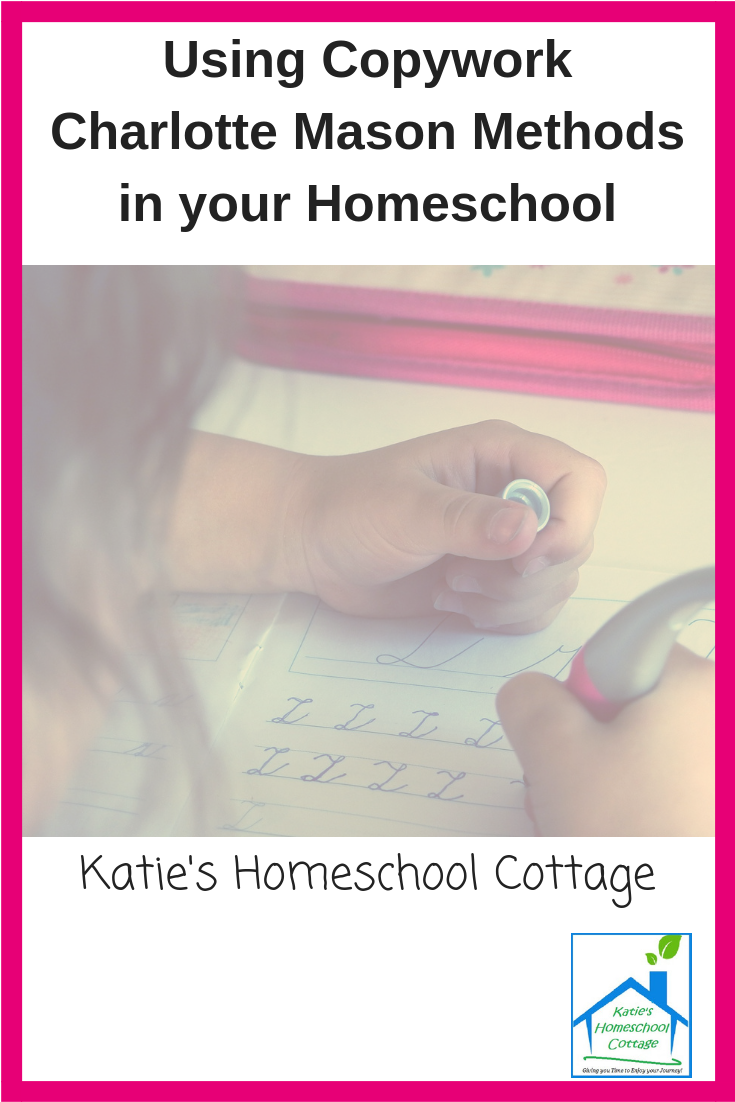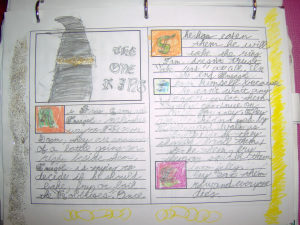This post about using copywork in your homeschool is one of a series about how to use Charlotte Mason methods.
If you have read my previous articles, you know that I use some Charlotte Mason’s methods in a variety of ways. Some methods I follow exactly as Ms. Mason would have used them with her students; others, I have customized to suit my teaching style and my children’s needs.
Some Charlotte Mason followers advocate copywork should be used only as handwriting practice and nothing more, while others state it can be used as copywork and a source of spelling practice. Ms. Mason wrote that copywork can be used as a careful “transcription” for handwriting practice using only the best handwriting, attention to detail, and short passages.
She also states that the child should note a few spelling words to observe closely, close the eyes to see the word, and then write the word from memory. Allowing the child to pick his own favorite passages from assorted sources makes it a more meaningful exercise; and, when written in a personal journal, the child has a book of favorite selections as a keepsake.
I allow my children to select passages I’ve printed out and put into a folder, or select a book they are reading or have read, or choose a book that corresponds to the topics we are discussing from a few choices on our reading list. They can then choose a notebooking page they can copy on from another folder, where I have placed copies of notebooking pages with various theme borders or pictures.
An example page might look like this –
This page is copywork from Lord of the Rings during our unit study for the Middle Ages. We also practice illuminating our pages like the monks during this time period.
I have other notebooking pages we used for different time periods in history and topics for science you can get individually or as a bundle at a lower price to use for written narration, copywork, or dictation for your unit studies or a study of a topic – Make Your Own ABC Book Bundle Set
When they have selected their passage, I point out to them any words I think might be challenging to spell, any capitalization and punctuation details, and a grammar concept, literary device, or special sentence structure used in the sentence.
This piece of copywork will be used for the first four days of that week, so I will divide the items I want to discuss over those days of the week, and then use the copywork piece for dictation on the fifth day.
I look over the copywork and have my child read it to me aloud word by word so he will be editing his own work. He will usually catch his own mistakes and correct them this way.
This forces my children to gain attention to detail and the corrections they make will remain in their memories so that next time they write the passage, that correction is still set in their minds.
I like to use examples of good writing and point out what makes the piece good writing, so that my child understands what he sees as he writes. That way later, when we are writing our narrations and we discuss what makes their writing good or better, we can refer to what he has learned in our discussions of copywork.
I know some homeschoolers using Charlotte Mason might be jumping up and down right now with their arms waving and saying “but you don’t have to point all of this out to the child, he will pick it up as he continues to copy down good literature.”
And others maybe saying, “I’ve never heard of copying the same piece everyday or using it for the dictation piece at the end of the week.”
This procedure is what my family follows because it is what has worked best with my teaching style and my children’s learning styles. They continue making connections between what writing elements have been used in their copywork with other pieces of literature they are reading or later copywork that comes along.
I guess I must feel the need for a little bit more structure to the copywork than letting my child pick this up more intrinsically.
Whatever way you use copywork, it is well worth the time spent for a number of reasons: developing handwriting skills, spelling skills, and copying good writing, which could be a precursor to emulating good writing as you use good literature as your model to follow when writing your own piece.
Find the best way copywork works for your family and have fun with it. Use a variety of pieces your children find interesting; write on fun notebooking pages and decorate them; and put together a neat looking notebook at the end of the year.
Here are some resources to use for copywork pieces:
https://www.amblesideonline.org/copywork
http://simplycharlottemason.com/timesavers/manucopywork/
Have fun with your copywork and creating books of your own!
How we use Notebooking Pages in our Homeschool is the next post in this series.
You may also be interested in Dictation can work hand in hand with copywork.
To see a list of other posts related to Charlotte Mason Homeschooling click here.







